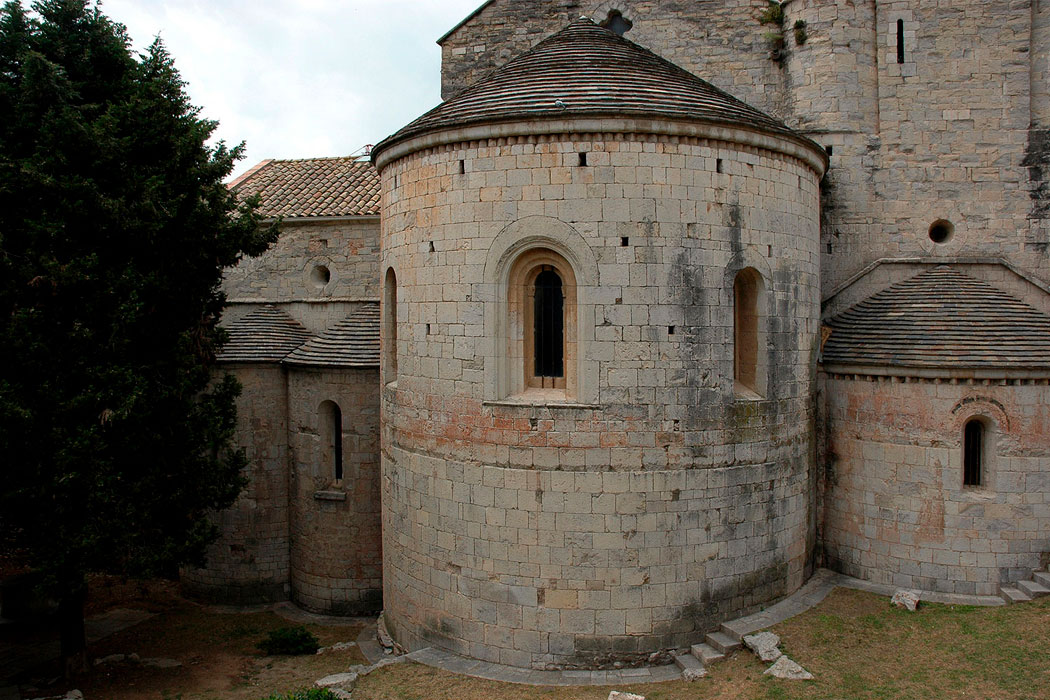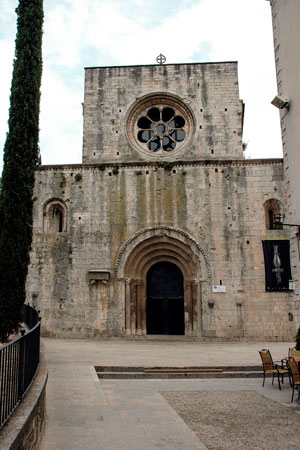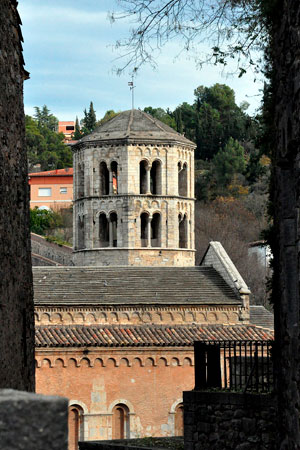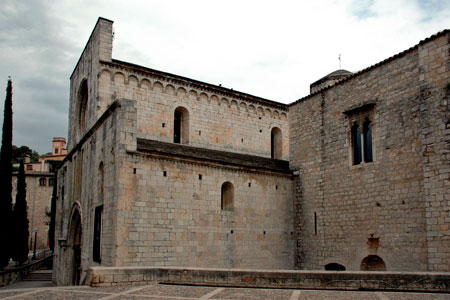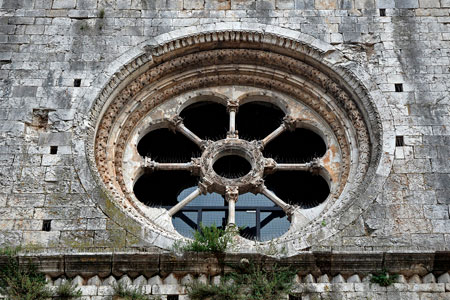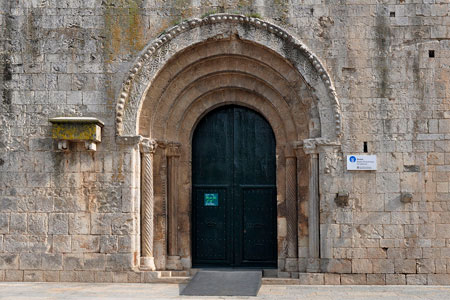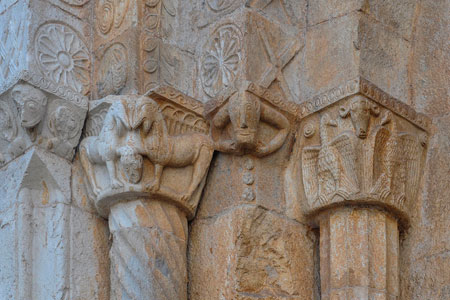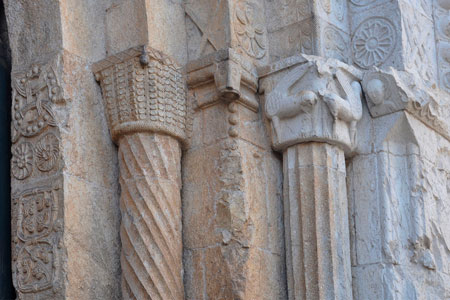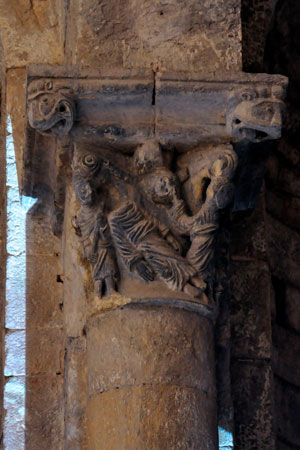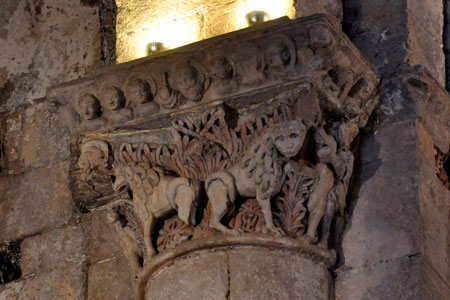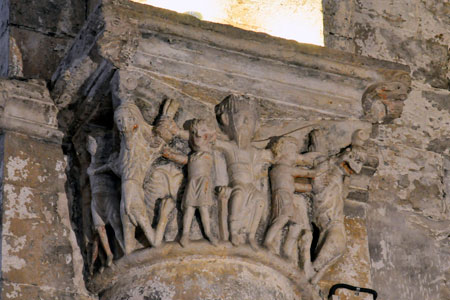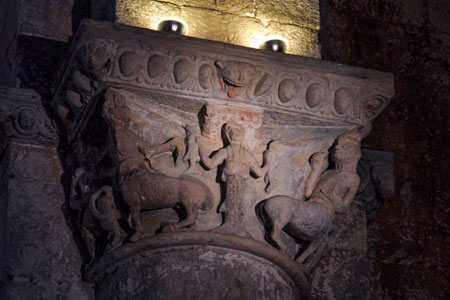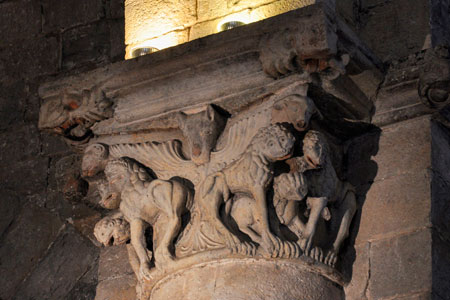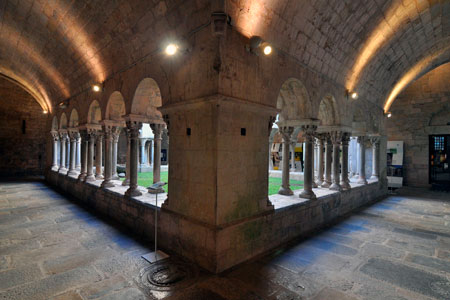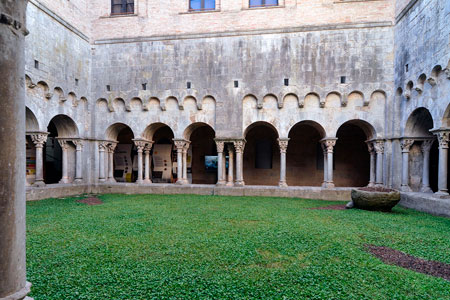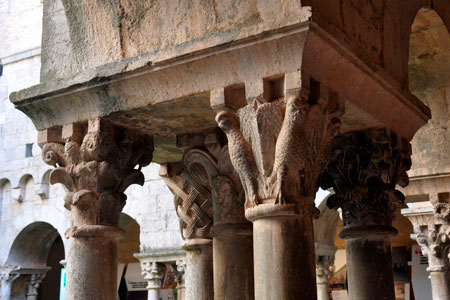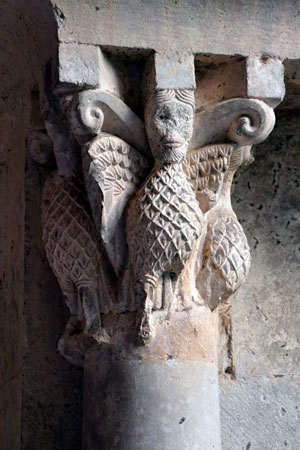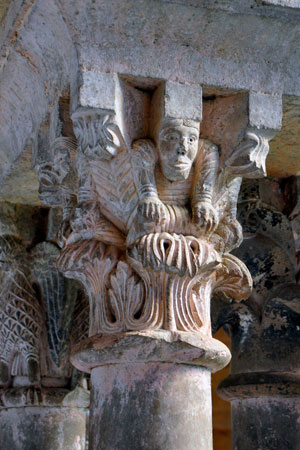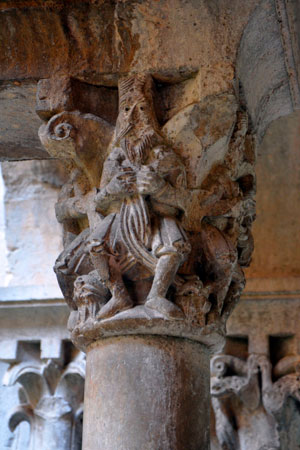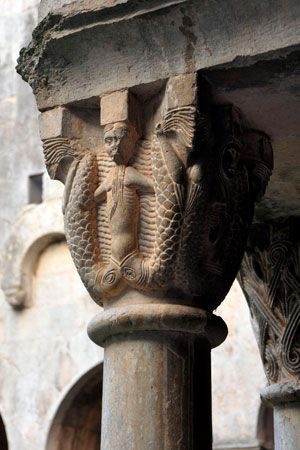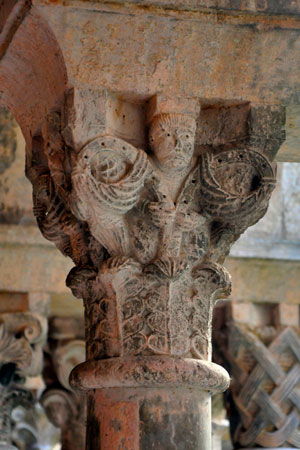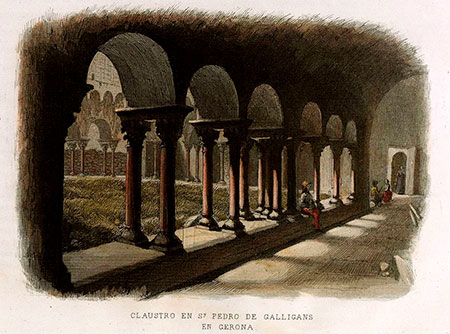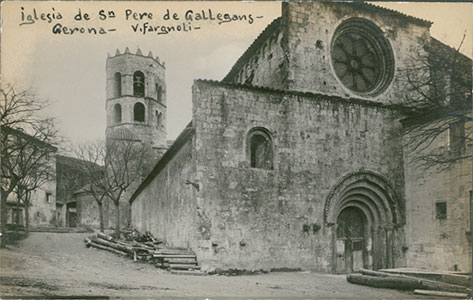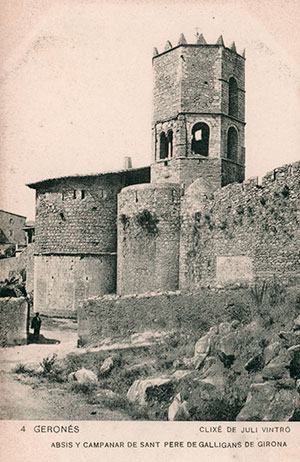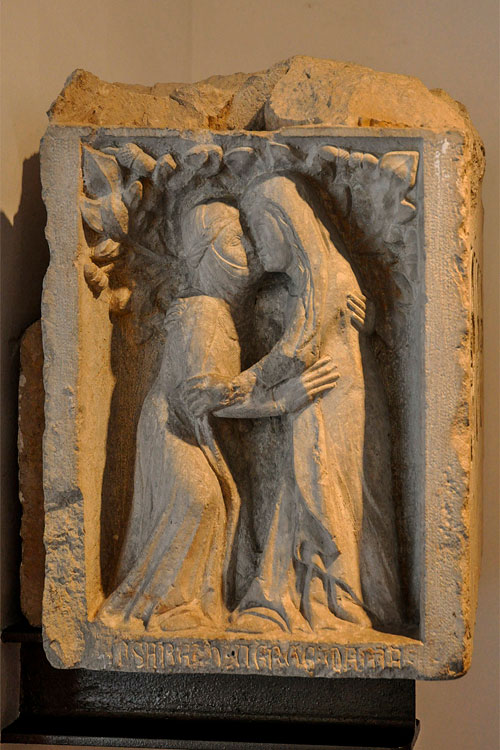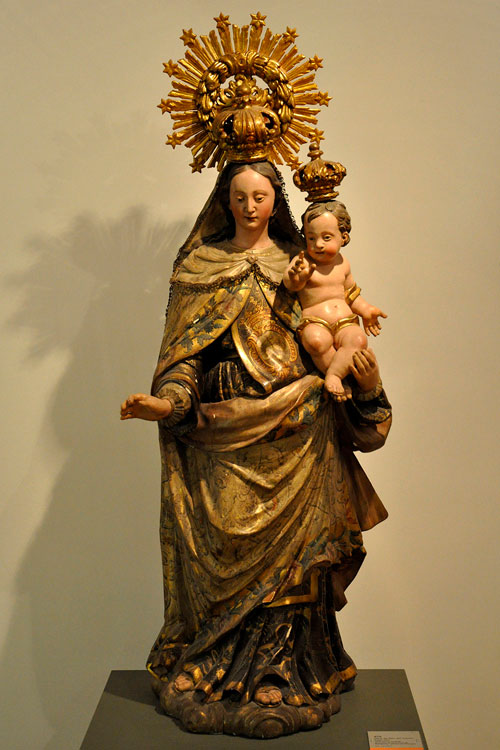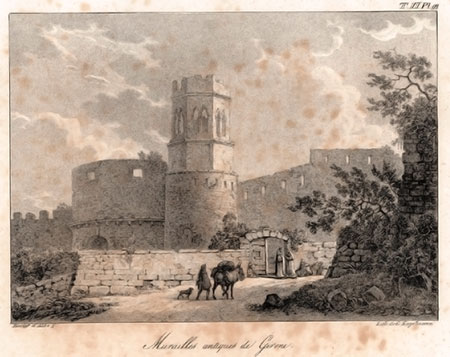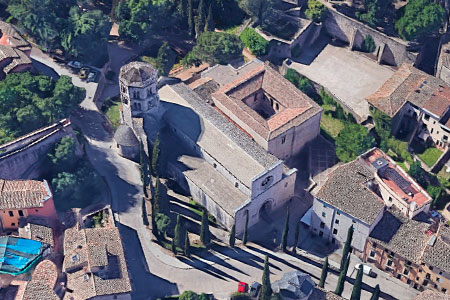An unfounded and implausible tradition attributes the foundation of this monastery to Charlemagne. The first true reference to the monastery is indirect and mentions a donation made by Count Sunyer (911-947) to Sant Pere de Galligants. According to E. Mallorquí this shows that, despite being a document dated 1063, the house already existed, at least in 947.
From 949 onwards, there is more documentation relating to the affairs of this house. In 1117, Sant Pere de Galligants was annexed by the monastery of Lagrasse (Languedoc-Roussillon) according to a document signed by Ramon Berenguer III, a union that was later confirmed by Pope Gelasius II. Although the documents are suspected forgeries, the dependence on Lagrasse is feasible and is in fact demonstrated in other later documents, and it seems that this link did not last long either. The monastery of Sant Pere de Galligants exercised civil and criminal jurisdiction over the suburb of Sant Pere, which extended to the right bank of the river Galligants.
It had its own parish, and the church of Sant Nicolau formed part of it, which would have had parish functions, leaving the church of Sant Pere at the disposal of the community. During the 12th century, the latter church was rebuilt, replacing an earlier one and giving way to the present one. The house suffered particularly during the French occupation of 1285, when the community was forced to abandon it temporarily. Later, the burgh of Sant Pere and the monastery itself were surrounded by a wall built by Peter the Ceremonious in 1375, which affected the head of the church that served as a defence for the city in this sector.
Although it did not maintain a large community, its income and possessions were important, and its domains extended to the outskirts of Girona and also to La Selva and Baix Empordà. In 1592, as part of a general reorganisation, Pope Clement VIII joined to this the monasteries, also Benedictines, of Sant Miquel de Fluvià (Alt Empordà) and Sant Miquel de Cruïlles (Baix Empordà), also Benedictine, which were in decline. Due to its location, the monastery fell victim on several occasions to wars and, because of its proximity to the Galligants river, to floods. It suffered severely from the effects of the Peninsular War, which left the monastery practically in ruins. The monks were not able to return until 1814, it never fully recovered and was closed in 1836.
The place was used as a barracks, which could not prevent further floods that affected it again (in 1843 and 1861). After this, the losses were compensated with furniture from other places, especially from the convent of Sant Josep, of the Discalced Carmelites. The monastery church continued to function as a parish church, while the other rooms were converted into the Provincial Museum, which was inaugurated in 1870. After the Civil War, the disaffected church was incorporated and since 1992 the complex has been the Girona headquarters of the Museu d'Arqueologia de Catalunya (Archaeological Museum of Catalonia).
The church and the Romanesque cloister have been preserved, but the rest of the rooms have been lost. What remains is still difficult to interpret and date due to the interventions and repairs carried out throughout its history, the walls, floods, wars... The church has a basilica plan with three naves; it has an irregular transept: in the south there are two apses, in the north two more, but arranged differently: one to the east and the other to the north. The octagonal bell tower stands on this transept arm. Inside, the church preserves some historiated capitals that have been linked to the Master of Cabestany. On the west façade is the doorway, which has been seen as an element that predates the present church's construction. Above it is a rose window, now moved, which could date from between the 12th and 13th centuries.
- BESERAN, Pere (1990). Alguns capitells de Sant Pere de Galligants i el Mestre de Cabestany. Estudi General, núm. 10
- CALZADA I OLIVERAS, Josep (1983). Sant Pere de Galligans. La història i el monument. Diputació de Girona
- CAMPS, Jordi; LORÉS, Immaculada (2000). Sant Pere de Galligants. Le Maître de Cabestany. Zodiaque
- CARRERA, Jordi S. (2020). Capitells monestir Sant Pere de Galligants. Rigau Ed.
- COSTA, Xavier (2019). Paisatges monàstics. El monacat alt-medieval als comtats catalans (segles IX-X). Tesi doctoral. Universitat de Barcelona
- GAVÍN, Josep M. (1982). Inventari d'esglésies. Vol. 10. Gironès, Selva. Barcelona: Arxiu Gavín
- GIRONELLA, Anna (2005). Girona. Convents i monestirs, segles X-XIX. Ajuntament de Girona
- LLORENS I RAMS, Josep M. (2011). Sant Pere de Galligants. Un monestir al llarg del temps. Girona: Museu d’Arqueologia de Catalunya
- MALLORQUÍ, Elvis (2008). El castell de Sant Esteve de Mar i el litoral palamosí al segle XI. Estudis del Baix Empordà, núm. 27
- MALLORQUÍ, Elvis (2013). Col·lecció diplomàtica de Sant Pere de Galligants (911-1300). 2 vols. Barcelona: Fund. Noguera
- MALLORQUÍ, Elvis (2014). Els oblidats fons documentals del Monestir de Sant Pere de Galligants (segles X-XIII). Taüll, núm. 41
- MERINO, Antolín; DE LA CANAL, José (1819). España Sagrada. T. XLIII. Madrid: Collado
- MONSALVATJE, Francisco (1909). Nomenclator histórico de las iglesias... Noticias históricas, vol. XVII. Olot: J. Bonet
- PUJADES, Jeroni (1829). Crónica universal del Principado de Cataluña. Llib. 8. Barcelona: J. Torner
- ROIG I JALPÍ, Joan Gaspar (1678). Resumen historial de las grandezas y antiguedades de la Ciudad de Gerona... Barcelona: J. Andreu
- ROURA, Gabriel (1988). Girona carolíngia. Del 785 a l'any 1000. Diputació de Girona
- SANZ, Antoni; PLADEVALL, Antoni (1991). Sant Pere de Galligants. Catalunya romànica. Vol. V. El Gironès, la Seva, el Pla de l’Estany. Barcelona: Enciclopèdia Catalana
- VILLANUEVA, Jaime (1850). Viage literario a las iglesias de España. Vol. XIV. Viage a Gerona. Madrid: Imprenta de la Real Academia de la Historia
- ZARAGOZA, Ernest (1998). Notícies històriques dels monestirs de Galligants, Fluvià i Cruïlles. Girona: Annals de l'Institut d'Estudis Gironins, vol. 39
